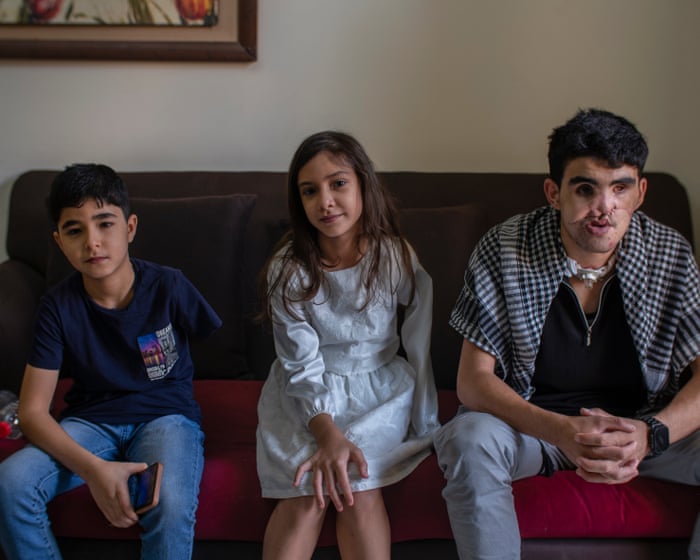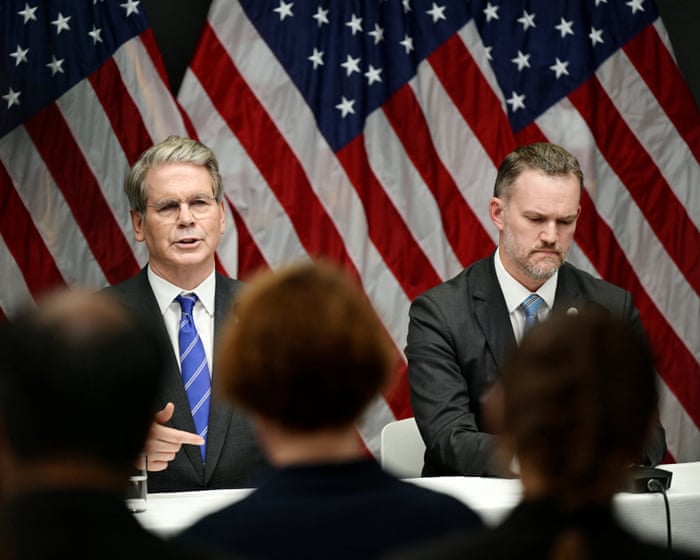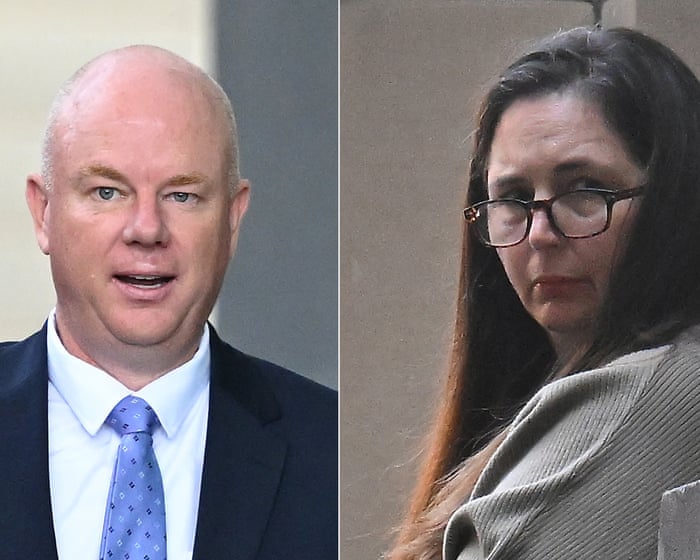Mariam Sabbah was fast asleep, curled up with her brothers and sisters under a blanket, when an Israeli missile struck their home in Deir al-Balah, central Gaza, in the early hours of March 1st.
The missile barely missed the sleeping children, but as the terrified nine-year-old ran toward her parents, a second missile hit. “I saw her coming to me, but suddenly there was another explosion and she disappeared into the smoke,” says her mother, Fatma Salman.
As her parents frantically searched for their children, they found Mariam lying unconscious in a pool of blood. Her left arm had been torn off, shrapnel had pierced her small body, and she was bleeding heavily from her abdomen.
In addition to losing her arm, the explosion caused severe abdominal and pelvic injuries, with shrapnel tearing through her bladder, uterus, and intestines.
“Mariam needs specialized pediatric reconstructive surgery,” says Dr. Mohammed Tahir, a British surgeon who treated her while volunteering at al-Aqsa Hospital in Gaza. “Her arm amputation is very high and requires limb lengthening and a specialized prosthesis. Without this, it will be very hard for her to live a normal life.”
Mariam is one of tens of thousands of people in Gaza who have been injured and disfigured by Israeli military attacks over the past 23 months. These attacks have also killed more than 64,000 people, mostly women and children.
Repeated military strikes on Gaza’s hospitals, along with Israel’s blockade of essential goods and supplies, have devastated the healthcare system. Doctors lack the resources to treat the sick, injured, and starving.
Since October 2023, 7,672 patients, including 5,332 children, have been medically evacuated from Gaza for urgent treatment abroad. However, organizing and getting approval for these evacuations is a slow, difficult, and heavily scrutinized process.
According to the World Health Organization, more than 700 patients—many of them children—have died while waiting for permission to leave Gaza from Cogat, the Israeli government body responsible for approving medical evacuations.
Mariam and her family faced similar delays. After a specialist team in Ohio offered surgical care, the little girl waited two months for Cogat’s permission to leave Gaza. By then, her condition had worsened. She was finally evacuated to Egypt but then spent months waiting for her U.S. travel documents to be processed.
Just days before her appointment at the U.S. embassy in Cairo to approve her visa, the U.S. suddenly stopped issuing visas for Palestinians—including children—to receive medical treatment in American hospitals.
This decision followed an online campaign by far-right influencer Laura Loomer, who is close to Donald Trump. She posted pictures and videos of evacuated patients from Gaza arriving in the U.S. on social media, asking, “Why are any Islamic invaders coming into the U.S. under the Trump admin?”
Despite Loomer celebrating the visa ban as a victory and claiming it would stop “this invasion of our country,” the U.S. has accepted only 48 medical evacuations from Gaza, according to WHO figures provided to the Guardian. In comparison, Egypt has taken in 3,995 critically injured people, and the UAE has accepted 1,450. The UK has so far accepted 13.
Medical NGOs say that…Around 20 severely wounded children have been impacted by the ban and are now stranded in transit countries with nowhere to go. The medical care they urgently need to survive remains out of reach.
Since learning that her daughter’s treatment has been blocked, Salman has been unable to comfort her. “She won’t get out of bed and she won’t stop crying,” she says. “Mariam had pinned all her hopes for recovery on receiving medical care in the U.S.”
A few rooms away, 18-year-old Nasser al-Najjar is also stuck in Egypt due to the U.S. visa ban. He can no longer bring himself to look in the mirror.
Mohamed Nasser, Nasser’s uncle, shows an MRI image of the injuries to his nephew’s skull.
After being displaced, Najjar and his family were taking shelter at a school in Jabaliya, northern Gaza, when it was hit by an Israeli airstrike in January. The 18-year-old suffered devastating facial and jaw injuries that left him disfigured. He lost his left eye, his nose was severed, and his jaw was shattered, leaving him unable to breathe, eat, or speak properly.
“I used to take pride in my appearance, but now I don’t even recognize myself,” says Najjar, his voice raspy and strained.
The teenager needs extensive reconstructive and cosmetic surgery, which is not available in Egypt. Doctors have warned that without these operations, his condition will decline.
He was offered treatment at the El Paso Children’s Hospital in Texas, where specialists are ready to operate, but it is now unclear whether Najjar will ever be allowed to go.
Mohamed Nasser sits with his nephew Nasser al-Najjar, 18, who requires complex surgery not available in Egypt.
The uncertainty is taking a heavy mental toll. Ten-year-old Ahmed Duweik already suffers from phantom limb pain—sharp, stabbing sensations that come without warning and leave him screaming in agony. Since learning that his medical trip to the U.S. may not happen, he has become withdrawn and emotionally unresponsive.
Ahmed Duweik, 10, shows an image on his phone of some of his injuries.
Ahmed was asleep at home when missiles struck the Nuseirat refugee camp in the middle of the night. During the bombing, he suffered horrific injuries as shrapnel tore through his body. He lost an arm, suffered soft tissue damage in his right thigh, and sustained severe nerve and vascular injuries.
Ahmed needs complex reconstructive surgery and a prosthetic fitting, neither of which are available in Egypt. Since the attack, he has developed severe psychological trauma. He struggles to sleep, waking up every night crying and screaming, clinging to his mother in fear.
Doctors warn that any further delay in Ahmed’s treatment will cause his condition to deteriorate.
Dr. Mosab Nasser, CEO of FAJR Global—the medical aid organization that evacuated the children from Gaza and was set to arrange their surgical care in the U.S.—said the visa ban amounts to an “indirect death sentence on the most innocent victims of this war.”
Ahmed Duweik, 10, with his mAnother mother, Iman Al-Khatib, shares her anguish. “We’re talking about a handful of children with severe, life-threatening injuries,” she says. “These medical evacuations are a lifeline for them. We urge the U.S. government to reject divisive rhetoric and reaffirm its role as a temporary safe haven for those in desperate need.”
Her son Mazyouna’s journey—from a bomb site in Gaza to a Texas hospital—was a path to safety, but now his future is uncertain.
A U.S. State Department spokesperson confirmed to the Guardian that visa processing has been paused for a full review, noting, “Many countries worldwide have excellent hospitals that should help, including France, Australia, the UK, and Canada, to name a few.”
For now, the children are stranded in a bleak Egyptian hospital, living in limbo since the visa ban. They lack dedicated doctors and specialized care for their extensive war injuries. Families are confined to small, sweltering, cramped rooms, with no clarity about what lies ahead.
“We feel so powerless,” says Khatib, sitting beside her son. “All we can do is pray his visa comes through before death does.”
Frequently Asked Questions
Of course Here is a list of FAQs about the topic We pray for a visa before death Gazas wounded children stuck in uncertainty
General Understanding
Q What does We pray for a visa before death mean
A Its a desperate plea from families in Gaza It means they are praying their critically wounded child gets a visa for medical treatment abroad before the child dies from their injuries due to the lack of adequate healthcare in Gaza
Q Why are these childrens visas so uncertain
A The process is incredibly slow and complex It involves security checks by multiple countries extensive paperwork and coordination between warring parties for safe passage out of a conflict zone which often leads to fatal delays
Q Cant they just get treatment in Gaza
A Gazas healthcare system has been devastated by the conflict Hospitals are destroyed understaffed and lack essential supplies electricity and equipment to treat severe complex injuries like burns and shrapnel wounds
The Process and Challenges
Q Which countries are these children trying to go to
A They are typically trying to reach neighboring countries like Egypt or Jordan or other nations that have agreed to accept medical evacuees often through agreements with the World Health Organization or the Palestinian Red Crescent
Q Who decides which children get to leave
A Its not one single entity Decisions involve the local authorities in Gaza the Israeli government the receiving country and often international organizations like the WHO that help coordinate medical evacuations
Q What is the biggest obstacle to getting a visa
A The main obstacles are securing security clearance from all involved parties and obtaining a guaranteed spot in a foreign hospital The constant closure of the border crossing is a major recurring problem
Q Are only children eligible for these medical visas
A While the focus is often on children due to the urgency of their conditions adults with lifethreatening injuries also apply However childrens cases often receive more international attention and priority
Impact and Context
Q What happens to the children who dont get a visa in time




